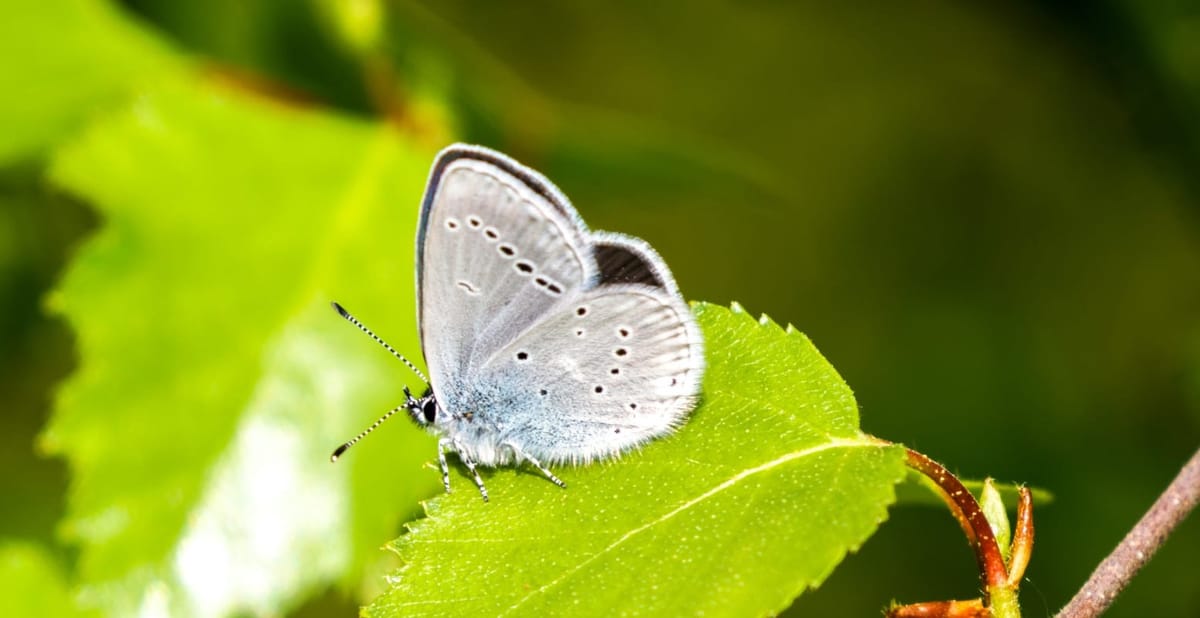Numbers of one of Scotland's Fastest-Declining Butterflies have Exploded Following Warm Spring Weather.

By Jill Dando News
One Butterfly Conservation volunteer has counted a staggering 523 Small Blues in just an hour-and-a-half at the Balnagown Estate near Invergordon, while other volunteers have discovered two new colonies of the species - one south of Wick and one at Nairn Railway Station.
Another volunteer recorded a Small Blue on 30 April - only the second time Small Blue has been recorded in April in Scotland.
Butterfly Conservation Species on the Edge Project Officer Tracy Munro said: "It has genuinely been astonishing to see these numbers of Small Blue on the wing, and I have loved receiving excited messages from our volunteers along the north and east coasts as they spot them. To record numbers over 500 at a single site is staggering and really highlights the benefits of our working with landowners and volunteers to create habitat for this charismatic wee butterfly.”
Numbers of Small Blue counted at Balnagown are already double what they were last year.
Butterfly Conservation has worked with volunteers to maintain habitat for butterflies including the Small Blue on the estate since 2020.
Richard Aspinall, the volunteer who counted 523 Small Blues in just 90 minutes on 21 May, said: "It is a rare experience now, but a real pleasure, to see such abundance coming from dedicated conservation and land management efforts."
Balnagown Estate Factor Callum Paterson added: “We’re thrilled to see such a boost in Small Blue numbers this year. It’s a real credit to the work of Butterfly Conservation and the volunteers, and we are proud to be playing a part. Ballchraggan Wood is clearly proving its worth as a vital site for these special species.”
At Nairn Beach, volunteers counted 31 Small Blues in a single survey compared to 13 last year; at Dunnet Dunes on the north coast the count was 37 compared to 13 last year, and at Lossiemouth an astonishing 72 were counted compared to last year’s 16.
The numbers are so great that Butterfly Conservation now thinks the butterfly could have a second ‘brood’ this year (which does not normally occur for this species in Scotland), meaning that caterpillars emerge in May and June would pupate and hatch into a whole new generation of adults in August.
Tracy added: "It's even more exciting because when a population explodes like this it can force the females to fly further afield searching for Kidney Vetch and thus cause population expansion. We would love everyone in Scotland to keep an extra eye out now and in August, and let us know if you see Small Blues by using the iRecord Butterflies app."
The Small Blue, Cupido minimus, is the UK's smallest resident butterfly with an average wingspan of just two-to-three centimetres.
Its caterpillars only eat one plant - Kidney Vetch.
Since 1983, the national distribution of Small Blue has decreased by 43 per cent. In Scotland its abundance - the number of individuals counted at sites - has declined 39 per cent since 2005.
The declines are due largely to destruction of habitat and wider land use changes, and on the official conservation Red List for Great Britain the species is now classed as Near Threatened.
However, Butterfly Conservation is fighting back, and in 2023 the charity secured funding from the National Lottery Heritage Fund-backed Species on the Edge program – a partnership of NatureScot and seven conservation charities – to help butterflies and moths across Scotland’s coasts, including Small Blue.
As part of this, Tracy has worked with partners including the High Life Highland Countryside Rangers and teams of volunteers to enhance more than a hectare of Small Blue habitat at sites along the east coast by removing scrub plants to make more room for Kidney Vetch.
She even recruited pupils at Ardersier Primary School to grow Kidney Vetch plants which were then planted into new 'butterfly banks' created by volunteers nearby.
Butterfly Conservation Head of Conservation for Scotland Tom Prescott said: “We’re absolutely delighted to see Small Blue having such a brilliant year in Scotland, and it’s fantastic to know our team are helping it – but it’s a complicated picture.
“Last year was the fifth worst year on record for butterflies overall in the UK and that’s because we humans have destroyed and altered so much natural habitat. Climate change is bringing warmer spring weather which the butterflies enjoy, but populations can only regrow if they have high-quality habitat to expand to. It is therefore vitally important that we continue to work with landowners to create corridors of connectivity between suitable habitat patches and fight to protect current sites from habitat destruction.”
To see more about the work Butterfly Conservation do click here

If you have a positive story or uplifting news to share, we’d love to hear from you!
Just email us at news@goodnewspost.co.uk.
Whether it's a local hero, an act of kindness, or a personal win, your story could help spread joy and improve someone’s mental health. Let’s make the world a little brighter, one good news story at a time.
And don’t forget—you can sign up for free to get the latest feel-good stories straight to your inbox!





